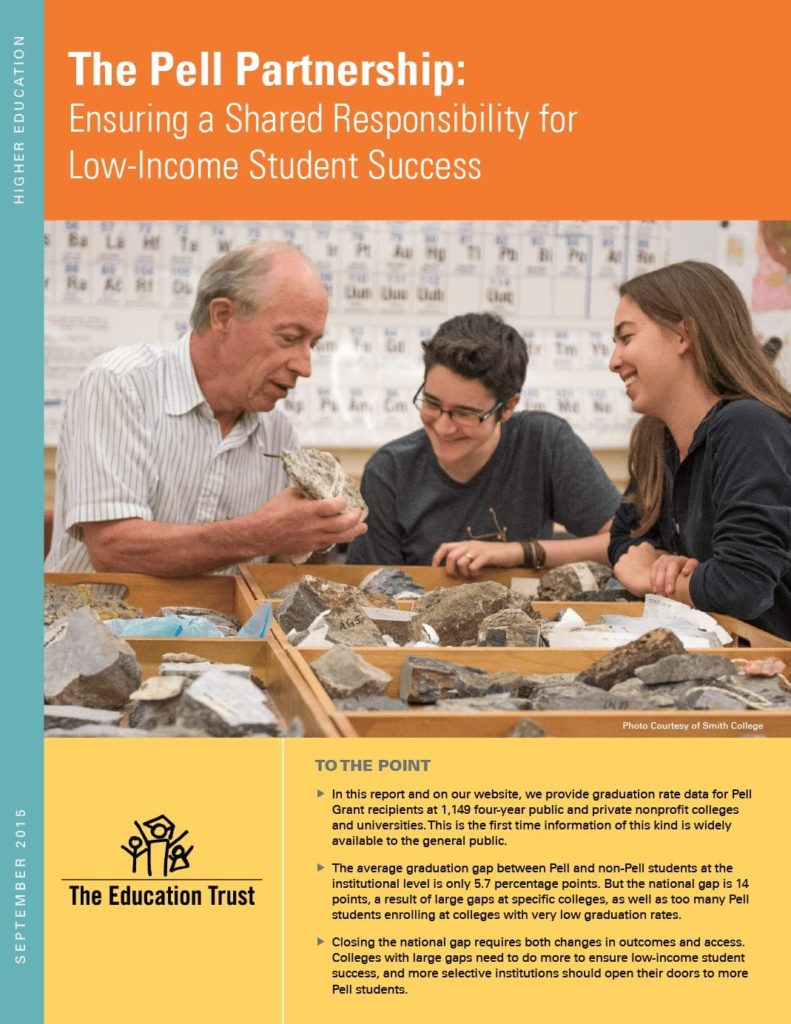The Pell Partnership: Ensuring a Shared Responsibility for Low-Income Student Success
Several organizations reporting on higher education issues have estimated a significant gap in the college completion rates of the…

Several organizations reporting on higher education issues have estimated a significant gap in the college completion rates of the low-income students who receive federal Pell grants and other college students, leading some to question the effectiveness of this investment of taxpayer dollars. But, according to The Pell Partnership: Ensuring a Shared Responsibility for Low-Income Student Success and online data tool, the average graduation gap between Pell and non-Pell students at the institutional level is actually much smaller: only 5.7 percentage points. And more than a third of four-year colleges and universities have even smaller gaps or no gaps at all. These data deliver a powerful blow to those who question whether taxpayer dollars are being wasted or whether most low-income students are even capable of completing college.
This is great news — but unfortunately the story doesn’t end there.
Written for policymakers, researchers, students and their families, The Pell Partnership gives a full view of Pell Grant graduation rates at nearly 1,150 institutions, including an analysis of the national completion gap and best practices at institutions that are serving low-income students quite well. The paper and accompanying materials provide something these stakeholders have waited far too long for — easily accessible information on how well our nation’s colleges and universities enroll and graduate their low-income students.